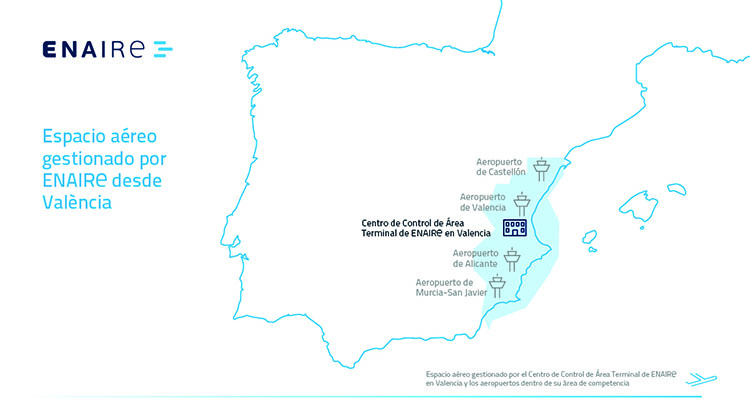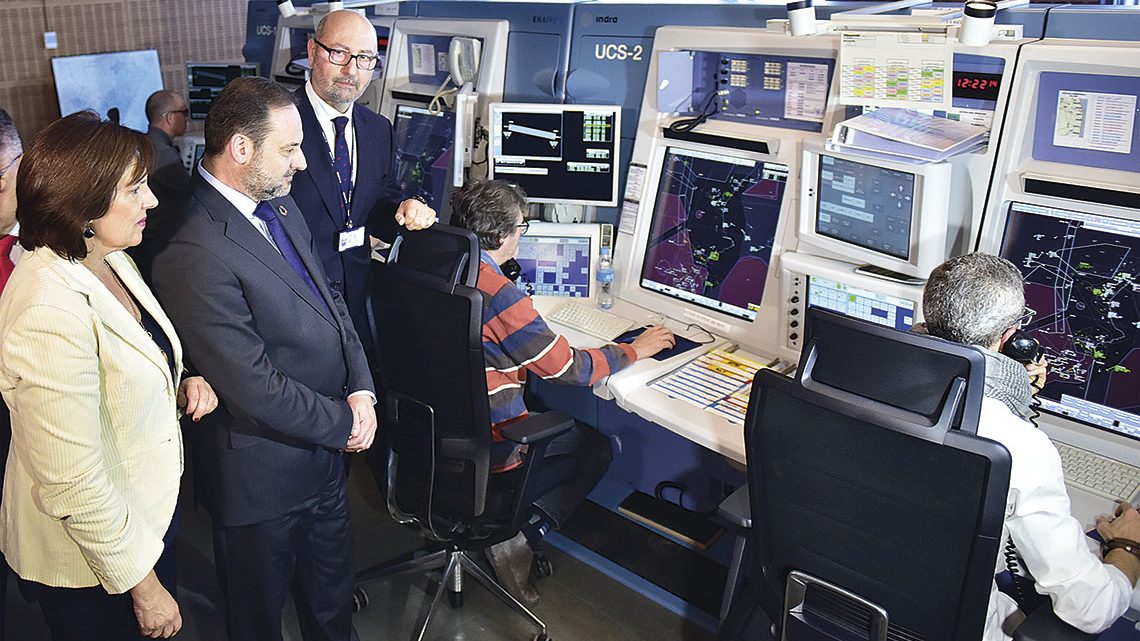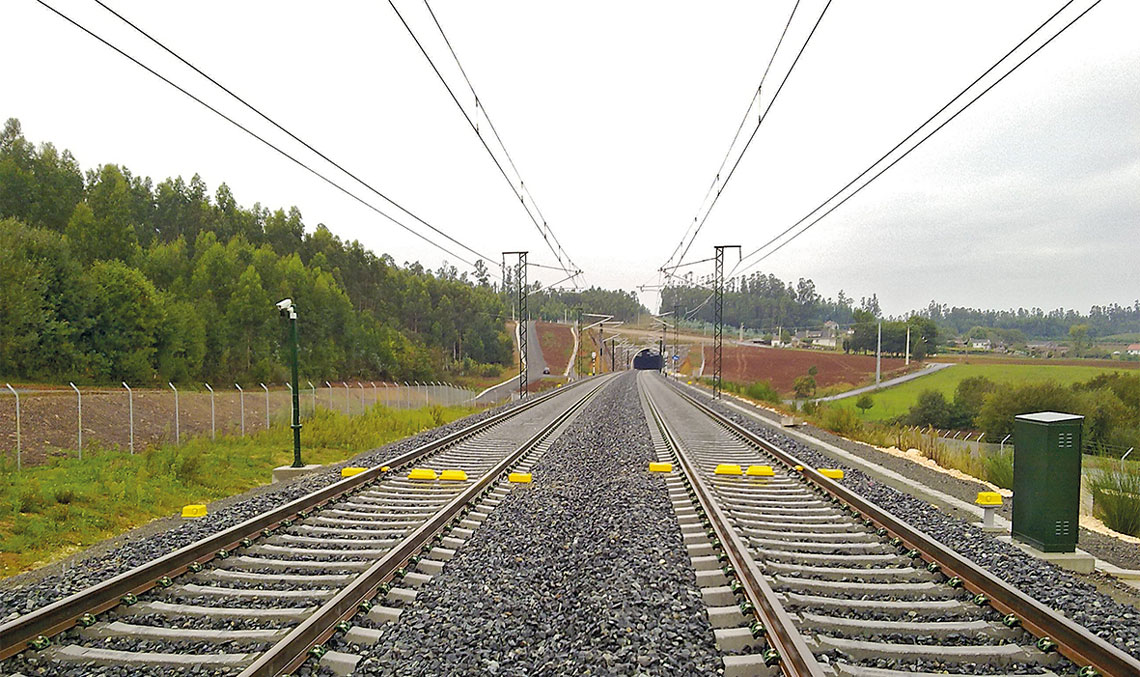The building, which was opened in February 2019, will provide air traffic approach-control services for the airports of Valencia, Alicante-Elche and VFR aerodromes. The centre is also responsible for coordinating the technical operation services that are carried out in relation to ENAIRE’s facilities (air navigation systems, such as VOR and radar, required for aircraft to follow their routes and to allow detection of their location at all times), which are located in the Valencian Community, the Region of Murcia and Albacete Air Base.
The investment made by the Ministry of Public Works, through ENAIRE, in the Valencia control centre totals 26.5 million euros. The new centre boasts cutting-edge technology and redundant systems to control air traffic and ensure the safety and continuity of air navigation services in order to respond to the demands of the major growth of air traffic in the Valencian Community, one of the most popular destinations for international tourism. In 2018, ENAIRE managed 188,000 flights from this centre, 70% of which were international. In 2019, traffic is expected to grow by 4% and the number of flights will exceed 200,000.
These ENAIRE facilities provide assistance to important services in the Region, such as flights for organ transplants and medical evacuation from La Fe Hospital and the National Transplant Organisation, the Maritime Rescue Air Base, firefighting, agriculture, the police, the Directorate-General for Traffic, air sports, flying clubs and aviation schools.

Valencia’s new TACC will be able to handle the expected air traffic demand, which grows dramatically on Spain’s eastern coast during the summer months as a result of increased international tourism.
What is a TACC?
A TACC is a centre where the air traffic in a certain area or sector of airspace is planned, organised and managed. Spain’s airspace is divided into three large flight information regions (Madrid, Barcelona and the Canary Islands). Each flight information region is, in turn, divided into smaller airspace sectors known as terminal control areas, aerodrome control areas and airways.
Valencia’s TACC has facilities that are sized to meet the major air traffic growth demands of the Valencian Community. This is therefore, as Jose Luis Abalos, Minister of Public Works, pointed out, “a strategic project because it is a replica, in the field of aeronautical infrastructures, of the Mediterranean Corridor, which is a social, economic and political priority”.
Different professionals from Enaire and Ineco have been working on completing this centre for several years. The work of experts in automation, communications, surveillance, deployment of Automated Air Traffic Control Systems, (AATCS), technical supervision and general matters has made the change to this new TACC possible.
The TACC boasts cutting-edge technology and redundant systems to control air traffic and ensure the safety and continuity of air navigation services
Ineco’s participation
Ineco participated in the construction and commissioning of this centre, and since 2008 has provided works management, technical assistance and supervision and surveillance of the works. In recent years, the company has participated in the implementation of TACC, collaborating with ENAIRE’s systems department, providing support to the automation division, navigation and surveillance division and technical operations, as well as with ENAIRE’s regional management, with a physical presence in Barcelona and Valencia.
Experts from the company have collaborated on the commissioning of radio navigation integration systems (RNS), which allow remote supervision and management of the radio navigation of the Eastern Sector and air traffic management (ATM) systems, which are the technical basis of air navigation and are used directly by air traffic controllers: AATCS which is responsible for the management of air traffic control, voice communication systems (VCS) for air traffic control which provide voice links with pilots and between controllers and last-resort radio and last-resort telephony equipment that guarantee oral communications as an alternative to VCS with limited functionality.
Other work consisted of validation of the software versions of the AATCS and VCS systems, the commissioning of the Orion supervision system and various jobs involving project coordination, plan updating and technical transition coordination, with participation in the commissioning of the systems and forming part of ENAIRE’s transition committee.






